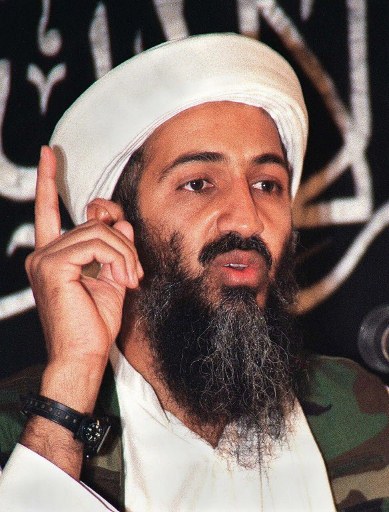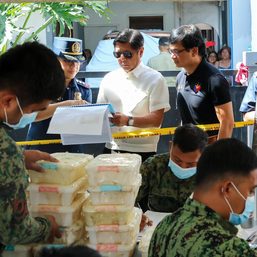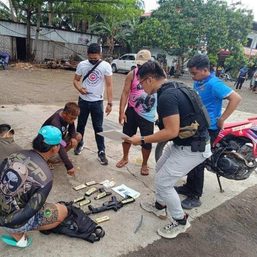SUMMARY
This is AI generated summarization, which may have errors. For context, always refer to the full article.

MANILA, Philippines – Afghanistan may well hold the key for Al-Qaeda’s past and its future.
When US navy seals killed Osama bin Laden a year ago, they discovered a treasure trove of documents that outlined Al-Qaeda’s priorities. US officials told Rappler that among the previously undisclosed documents was a paper by bin Laden’s successor, Ayman al-Zawahiri, laying out a strategy for Afghanistan after the United States withdraws its troops.
Exactly one year after bin Laden’s death, US President Barack Obama did a stealth visit to Afghanistan and addressed Americans, highlighting the importance this ravaged nation is playing in the global fight against terrorism.
After the decade long Soviet-Afghan war ended in 1989, the Soviets and the US withdrew their forces creating a power vacuum that was filled by mujahideens recruited by bin Laden for a global jihad.
Afghanistan became the crucible of al-Qaeda’s virulent ideology and tactics which spread globally. Now with the withdrawal of 22,000 US troops in September, analysts warned it may well play that role again in the future.
“Al-Qaeda and the Taliban will return to Afghanistan so we will see greater instability in another year’s time,” said Rohan Gunaratna, author of Inside al-Qaeda and the head of the International Centre for Political Violence & Terrorism Research in Singapore.
Two weeks ago, the Taliban launched a coordinated attack on Western embassies, NATO headquarters and Afghan government facilities in Kabul and 3 eastern provinces.
Analysts said the dramatic 18-hour assault was meant to push Afghans to align with the Taliban or risk being on the losing side when 130,000 foreign troops, led by the Americans, complete their withdrawal scheduled for 2014.
“We’re only going to see an increase in these attacks,” said Dipankar Banerjee, founding director of New Delhi’s Institute of Peace and Conflict Studies. “It helps [the militants] ensure political dominance in the new order as they slowly take over.”
Before dawn on Wednesday, May 2, Mr. Obama addressed the American people from Bagram Airbase and announced his agreement with Afghan President Hamid Karzai. He pledged American support for Afghanistan for 10 years after the withdrawal of the last American soldiers at the end of 2014, an attempt to end US involvement responsibly.
Symbol, not substance
That’s not enough, according to critics, who said the agreement is more symbol than substance, necessary for Obama’s re-election battle in November. His visit to Afghanistan comes just 4 days before two big campaign rallies kick off his political campaign. Part of his past promises include winding down two costly and unpopular wars in Iraq and Afghanistan.
“We are not coming close to the end of al-Qaeda,” Gunaratna told Rappler. “It’s a huge mistake to pander to popular opinion because the people do not know the threat.”
Although al-Qaeda’s core group has largely been decimated in the last 11 years, its ideology continues to spread – spawning a social movement that’s using regional conflicts, including in Iraq, Afghanistan, North Africa, Yemen and Southeast Asia, to drive its growth.
Although command central is heavily degraded, the social networks remain, and more groups continue to join. Just two months ago, al-Shabab, a militant group in Somalia, formally joined al-Qaeda, swearing an oath to its new leader, Egyptian Ayman al-Zawahiri.
This week, US authorities warned al-Qaeda’s Yemeni affiliate, AQAP (al-Qaeda in the Arabian Peninsula), may try to bomb US-bound airplanes with explosives hidden in the bodies of terrorists. Experts said AQAP’s master bomb-maker, Ibrahim al-Asiri, has been working on body bombs – surgically planted explosives in the stomach or rectal cavity.
AQAP was involved in the most recent major attacks on US targets: the “underwear bomb” used in an attempt to take down Northwest flight 253 in 2009 and the “printer bombs” in the failed cargo bomb plot in 2010.
A power vacuum in Afghanistan that would give groups like AQAP and other al-Qaeda affiliates a safe haven to train and plot would repeat what happened in 1989 – a power vacuum that gave birth to al-Qaeda.
“What happened was Afghanistan crumbled, and it became a safe haven,” said Gunaratna. “So the same thing is likely to happen – unless the international community, especially the Western nations that have the discipline and the resources, remain committed to the security and stability of Afghanistan.” – Rappler.com
Watch Rappler’s full interview with Rohan Gunaratna, author of Inside al-Qaeda here.
Add a comment
How does this make you feel?



![[Rappler Investigates] The guns of Apollo Quiboloy](https://www.rappler.com/tachyon/2024/04/quibs-guns-carousel.jpg?resize=257%2C257&crop=412px%2C0px%2C1280px%2C1280px)
There are no comments yet. Add your comment to start the conversation.